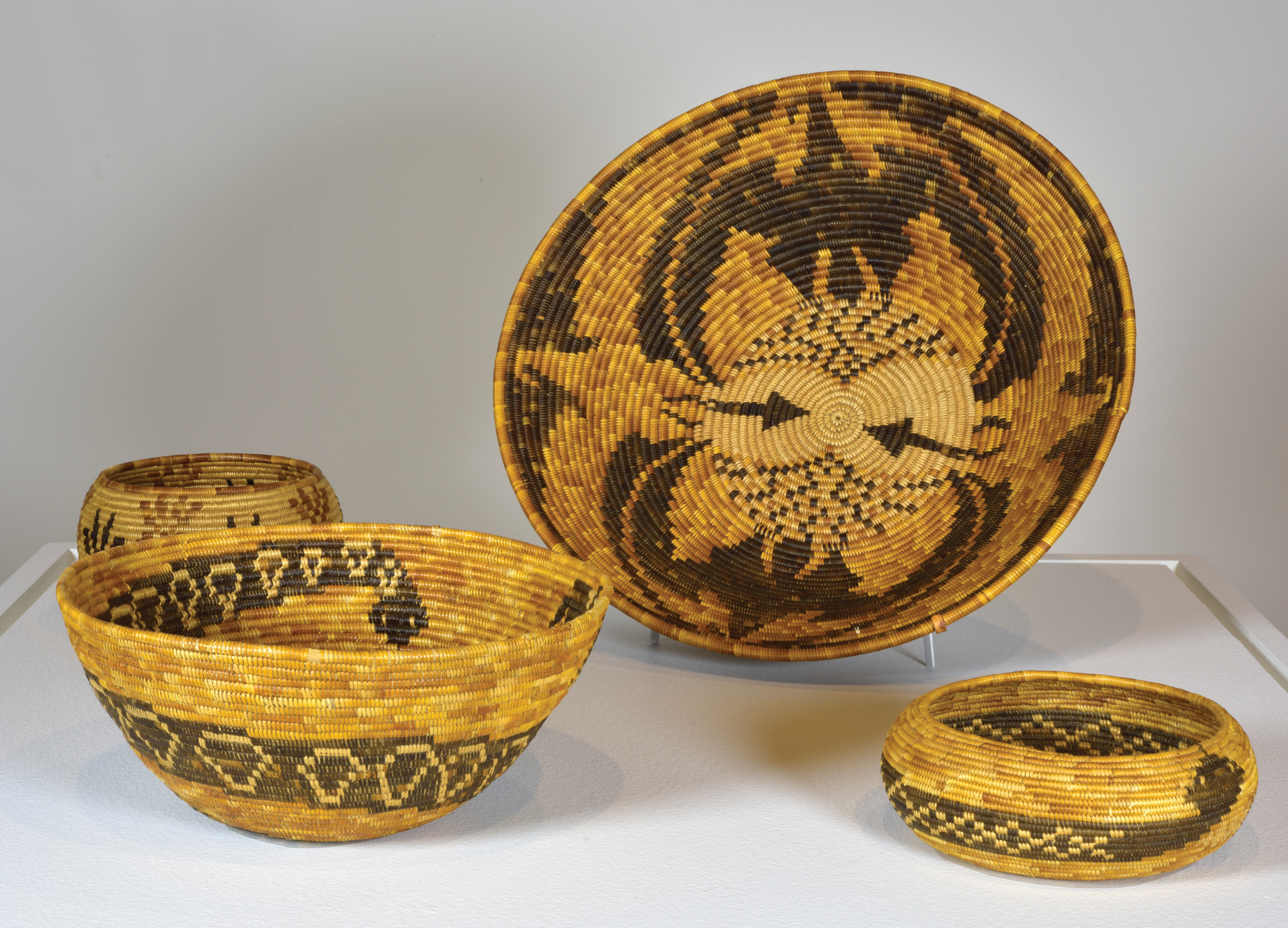Basketry

For thousands of years, Native Americans of the West have cultivated and harvested various native plants and roots to weave magnificent baskets. Basket weaving combined utilitarian application with simple, elegant forms to fulfil a variety of functions, from gathering and processing of food to cultural exchange and gift giving. Primarily the responsibility of women, the complex art of basketry required great technical skill, artistic vision, botanical and environmental expertise, and an understanding of cultural traditions.
Motivated by local traditions, self-expression, and community status, the diverse Native peoples of the West created hundreds of distinct regional styles, a practice that continues today. Prompted by the surge in the market at the end of the nineteenth century, basket weavers increased their production to meet the demand. To satisfy Anglo-American tastes, weavers began by 1890 to experiment with new forms and abstract geometric designs, as in the dynamic Apache Winnowing Tray with Lightning Designs. These styles eventually gave way to an increase in figurative elements, as in Cahuilla basket maker Guadalupe Arenas’ (née Rice) Rattlesnake Basket with Eagle, c. 1910
